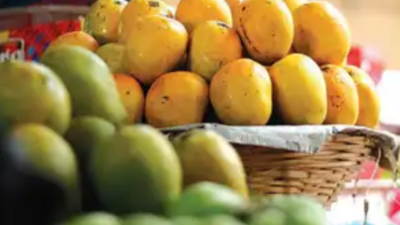Trending
Farm incomes plunge 8 times: Climate change stunting mango, cashew growth in Goa
Goa's mango and cashew crops are facing declining yields due to climate change, threatening farmers' livelihoods. Erratic weather patterns disrupt flowering cycles, impacting fertility and production. Some farmers are experiencing significant income losses, with some contemplating exiting the sector. Rising operational costs, coupled with limited government support, exacerbate the challenges faced by Goa's agricultural community, pushing them towards unsustainable losses.
PANAJI: Faced with temperature fluctuations related to climate change every passing year, both of Goa’s essential summer crops — mango and cashew — are finding their yields hit. Scientists warn that the fertility of these crops might soon be permanently impacted. Some farmers, already seeing their earnings lowered as much as eight times, are contemplating exiting the sector in Goa.

“In the past, I could make up to Rs 25 lakh per season from mangoes and cashews,” said Nestor Rangel, a mancurad mango farmer from Valpoi. “This year, my income is down to Rs 3 lakh, which didn’t cover even my manuring costs. I have decided that I will give up growing mangoes next season.”
Experts said climate shifts are making flowering hormones and seasonal cycles go awry in cashew and mango crops.
The erratic weather patterns of extreme differences between day and night temperatures are also responsible for irregular flowering in mango crops.
“The unpredictable fluctuations of temperature create an imbalance in flowering hormones and the seasonal cycle of the crop,” said a former principal scientist of horticulture at the Indian Agricultural Research Institute, A R Desai. “These temperature fluctuations were more prevalent this year, and the effects are already being felt by farmers.”
The fluctuations can hurt the fertility of either crop over time.
“Temperature, light, precipitation, and humidity are essential for plant growth. With climate change affecting these factors, hormonal changes in plants are becoming more common,” said Chandrahas Desai, the managing director of the Goa State Horticulture Corporation. “These fluctuations often result in vegetative rather than reproductive growth, leading to reduced yields.”
Desai added, “If these conditions persist, they could also contribute to diseases while the flowering and fruiting process is under way.”
Jagannath Lawande, a farmer from Ponda, reported that mango production has dropped to a mere 10% of the usual yield, with local varieties showing negligible growth. “The intense heat is affecting the mancurad mango crop, which is showing almost no growth this year,” he said. “The initial flowering of cashews was fine, but the subsequent flush was severely struck by high temperatures, which led to a drastic reduction in production.”
Cashew production, though slightly better, is still below average, with farmers reporting yields of only 50-60% of normal.
Farmers are also challenged by rising operational costs.
“In the pre-pandemic period, labour costs were around Rs 300 per day, but now we are paying Rs 1,000 for cashew plucking and Rs 2,500 for mango plucking,” Lawande said.
Maintenance costs have skyrocketed too. The cost of weeding, a vital task for maintaining healthy crops, has doubled — from Rs 30,000 to Rs 60,000.
With dwindling crop yields and rising costs, many farmers are struggling to keep their businesses afloat.
“The business is in complete loss. It’s no longer feasible to invest in this industry,” said a farmer from Sattari. “There is no help from govt to recover from these conditions. It only offers a 50% subsidy on grafts, and we are left to manage the labour costs and losses from climate change on our own.”

About the Author
Nida SayedEnd of Article
Follow Us On Social Media









